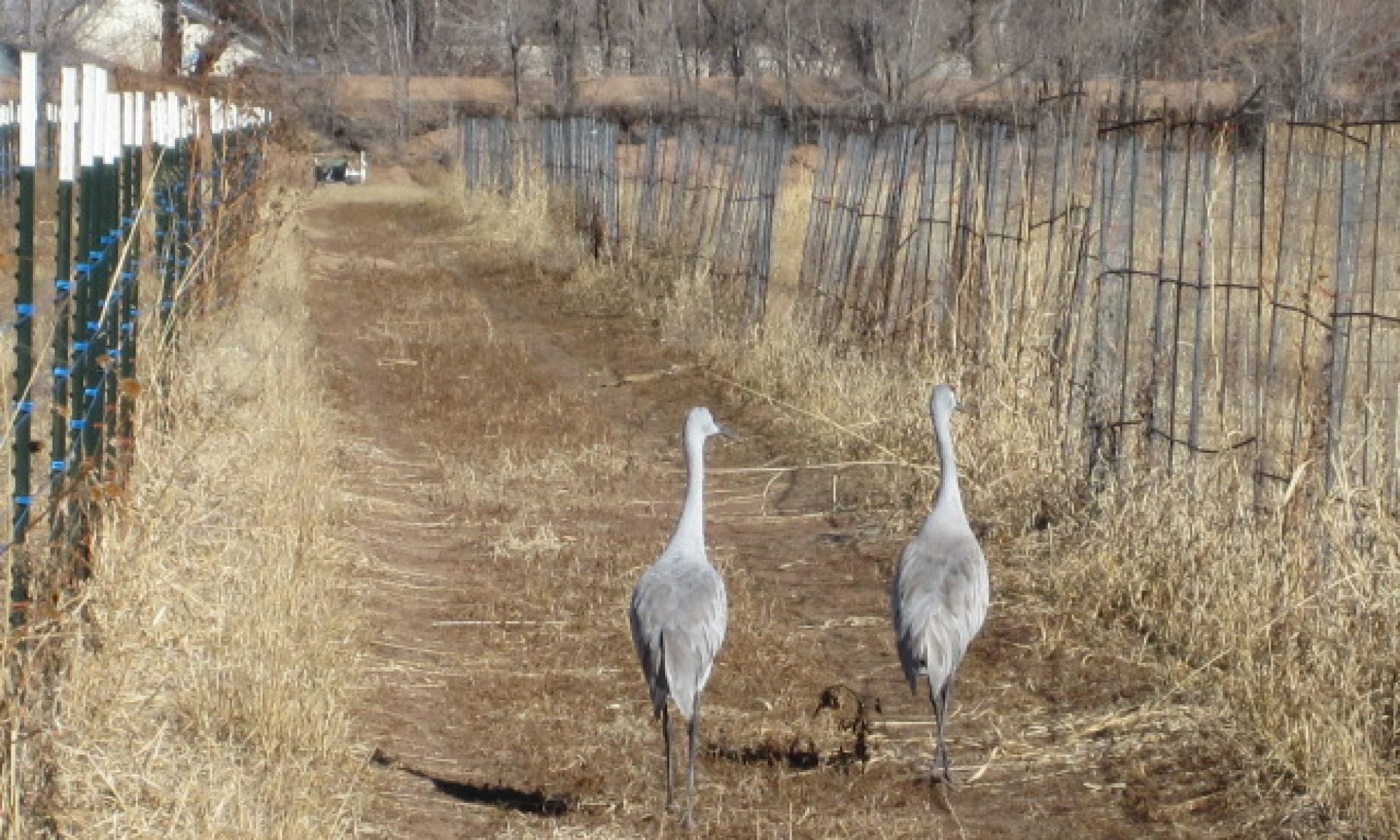I’m not really much of a cyclist. Take one look at my teal ten-speed and you’ll notice at least three dead giveaways. No toe clips. Two big metal baskets on the back. A peeling purple bumper sticker that says “So many books, so little time.” Clearly, putting my feet on the pedals isn’t my primary passion.
The fact that I’m not a real cyclist also shows when I’m meandering down the river trail. I tend to spend most of my time looking up, wobbling into the other lane, watching for porcupines and bald eagles in the still bare cottonwoods. Frequently, I see them.
A few Sundays ago I was about six miles in without spotting as much as a scrub jay. Riding the river trail is a little like driving toward The World’s Biggest Cross somewhere in the middle of Texas. A straight line of pavement peels away clear to the horizon.
So I was surprised to see something big and black change the shape of the line ahead. I was even more surprised when I saw the empty ribs arcing gracefully up into clear air. It looked like a picture I might have seen in my brother’s Boy Scout book of a canoe before you put its skin on. It looked like a moment Georgia O’Keefe might have captured and called “Rib Bones on Trail.”
Just south of the bones, at the point where the tail connected to where the body used to be, a brilliant spot of fresh red marked some still uneaten bits. I have to point out that I’m not talking about a squirrel or a rabbit. This animal is big.
The trail along the river is ninety-five parts urban, five parts nature. It’s where city people like me go to be outside without worrying that we won’t find our way home. It’s not really supposed to be wild, in the “animals are eating each other in the middle of the bike trail” sort of way.
A few hours later I rode back and he was gone. He hadn’t left a mark, no blood or crime scene chalk recorded the spot where he died. I tried to imagine a city Open Space employee out clearing carcasses at seven o’clock on a Sunday morning. It seems more likely that whoever’s meal I’d interrupted came back to finish the job.
All week I kept thinking about those ribs. I saw their shape in the way the trees arched over the bridge. I thought of them when I went for a run and felt my own torso, breathing. I talked to a biologist friend who convinced me to call him a beaver. I googled “beaver size” and learned that they can weigh as much as seventy-five pounds, and that they are most vulnerable when they travel on land. I googled “beaver predators” and learned a coyote, fox, eagle, mountain lion, or even a large hawk could have been eating breakfast just before I rode by.
As I rode home that morning I kept thinking about the scene in Kundun where they dismember the body of the Dalai Lama’s father, and offer it to be eaten by the birds. Vultures flock in and carry bits of the body away, much as I imagine a bald eagle might have fed on this beaver. I had never heard of Tibetan sky burials before. In an article in the Orange County Register, Nawang Phuntson, a professor and Tibetan native, takes Scorsese to task for failing to provide the “sacred philosophy” behind the sky burial. He explains that the practice is grounded in the belief that “nothing should be wasted, that death should be used to sustain life.”
I’m thinking about those sky burials and about using death to sustain life when I see the Canada Goose perched high in a cottonwood, keeping an eye on the trail. I wonder if she has been sitting here all morning, if she witnessed the moment when the bald eagle tugged at the beaver’s heart, and carried it, still warm from beating, into the sky.


One Reply to “Signs”